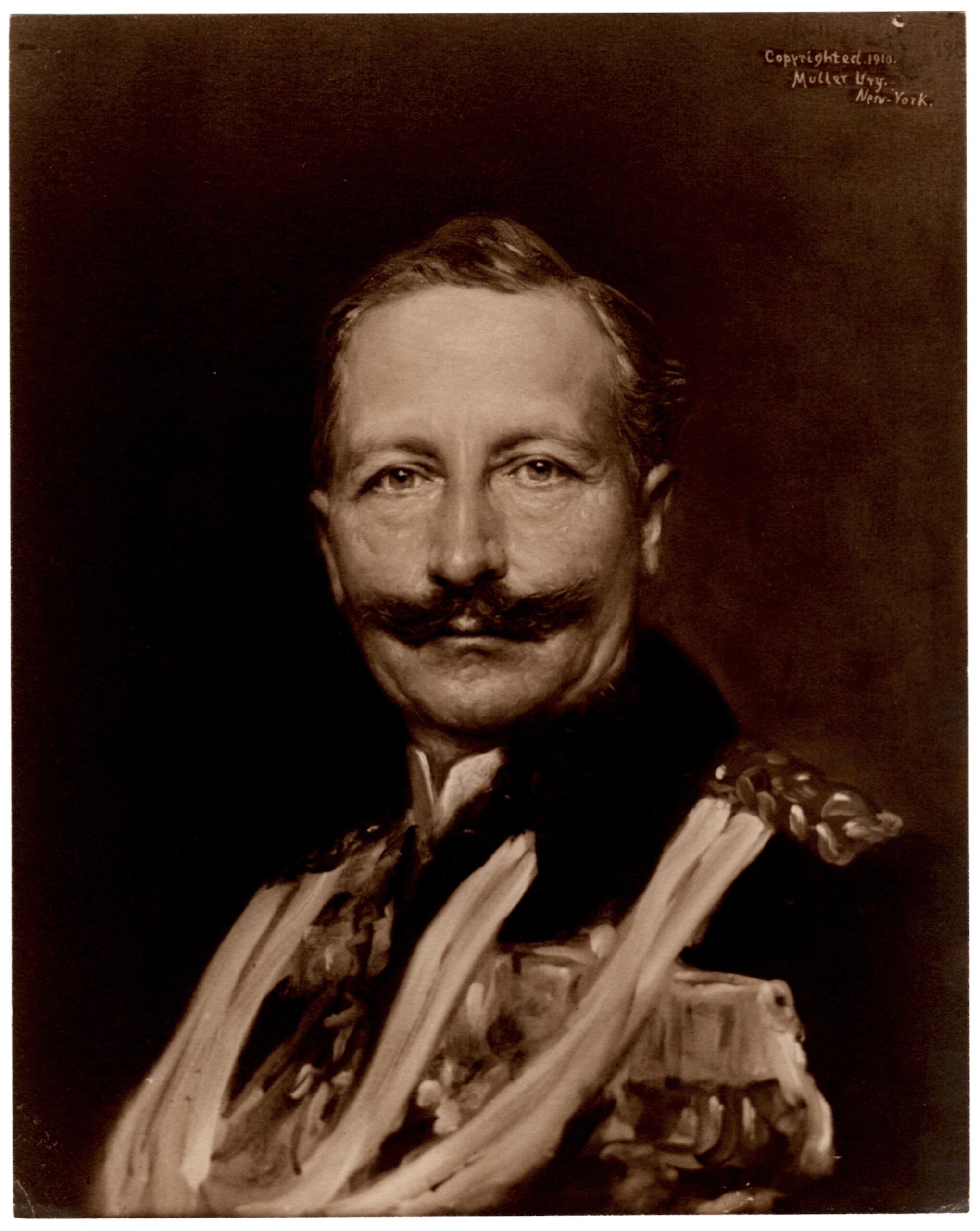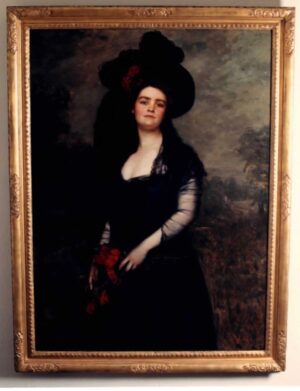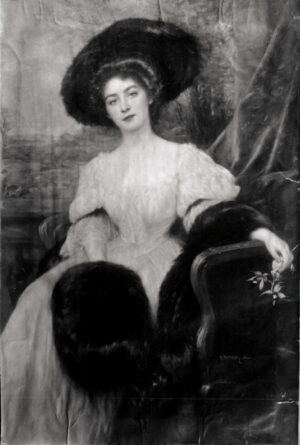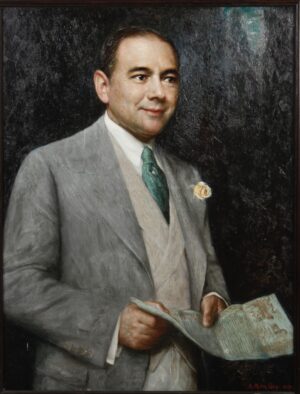WILHELM II, Kaiser of Germany
Description:
Head and shoulders. Oil on canvas, 61 x 51 cms. Signed and dated upper right 1909.
Location:
Max Planck Gesellschaft, Berlin-Dahlem, Germany.
Provenance:
This picture apparently remained with the artist until it was included in the artist’s studio sale at the Plaza Art Galleries, 9-11, East 59th Street, New York, November 24 & 25, 1947, Sale No. 2809, as Lot 114 (Fetched $27.50 – marked copy in Frick Art Reference Library).
It is not known who bought it at the sale but it was much later acquired by the Galerie Pels-Leusden, Fasanenstrasse, Berlin, sold by them to Dr Rudolf Neuhaus, former director of the archive for the Max Planck Gesellschaft, 8 July 1982. The reason for the purchase was that the Max Planck Gesellshaft was originally founded by Kaiser Wilhelm II.
Exhibition:
M. KNOEDLER & CO., 556-558 Fifth Avenue, New York, March 31 – April 12, 1913, No. 1, as ‘Portrait Study of H.M. Emperor of Germany.’
COWIE ART GALLERY, Biltmore Hotel, Los Angeles, California, February 1933
Bibliography:
American Society, January 31, 1910, Vol. 5, No. 5 (reproduced)
New York Times, May 1, 1910 (reproduced)
New York Herald, April 2, 1913
American Art News, New York, April 5, 1913
Brooklyn Eagle, April 6, 1913
New-York Staats Zeitung, April 6, 1913
Town & Country, New York, May 2, 1913 (reproduced in colour on the cover)
Ringier’s Unterhaltigs-Blatt, May 23, 1942, No. 21, ‘Ein Schweizer, der Papste und Könige malte’ by Emil Luthard (reproduced)
Stephen Conrad, “Re-introducing Adolfo Müller-Ury (1862-1947): The artist, two dealer, four counts and the Kaiser: a hitherto unknown episode in international art history” in The British Art Journal, Vol. 4, No. 2, (2003) pp. 57-65, fig 6, p. 59.
The sitter was born Prince Friedrich Wilhelm Viktor Albert,on 27 January 1859 and died 4 June 1941, was the last German Emperor (Kaiser Wilhelm II) and King of Prussia reigning from 15 June 1888 until he abdicated on 9 November 1918 shortly before Germany was defeated in World War I. He was the eldest grandchild of Queen Victoria and related to many monarchs and princes of Europe, most notably his first cousins King George V of the United Kingdom and the Tsar of Russia, Nicholas II.
The history of the three quarter portrait for which this was a study and the context of the commission has been published in an article by the editor of this website: Stephen Conrad, “Re-introducing Adolfo Müller-Ury (1862-1947): The artist, two dealer, four counts and the Kaiser: a hitherto unknown episode in international art history” in The British Art Journal, Vol. 4, No. 2, (2003) pp. 57-65.
American Art News, April 5, 1913 described this study as an ‘excellent and striking likeness.’ The Brooklyn Eagle, same date, went further: ‘At the side of the portrait of the Cardinal is that of the Emperor of Germany. It is a gray canvas, and that prevailing tone matches well with the cool, steady, gray eyes of Emperor Wilhelm, which look directly at you. It is a bust portrait and it shows partly the decorations that cover his breast. The artist has caught rather the broadly human than the military aspect of the ruler, and in spite of the turn downward of the corners of his mouth, you suspect that he is peace-loving at heart instead of a military conqueror. His broad forehead bespeaks ability to command, while his prominent perceptives, according to the phrenologists, over the eyebrows, reveal his artistic nature.’
It should be mentioned that the artist mentioned in a letter dated November 1, 1915 to Colonel Edward House (Yale University Library, typescript copy of lost original, MS466, Box 82A, Folder 2808) that he had painted the Kaiser three times. This is evidently an exaggeration.





